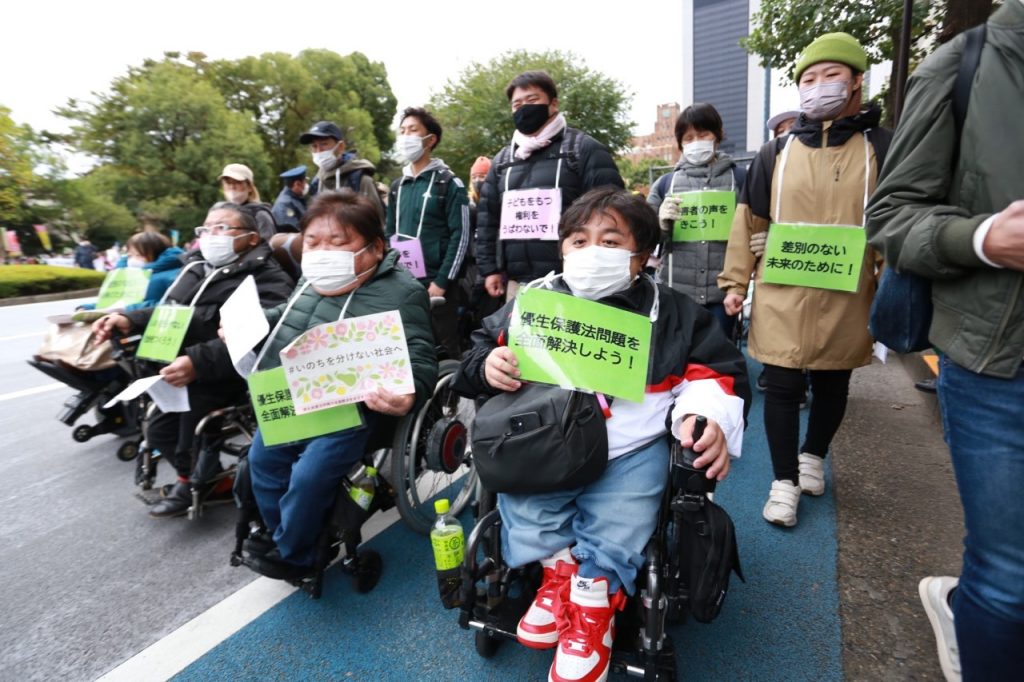Tokyo, 50 years of forced sterilisation: 25,000 victims including children
A parliamentary report investigates the consequences of the eugenics law that remained in force until 1996. At least 16 thousand people were sterilised by force or deception. Although the Japanese government sanctioned compensation in 2019, just over 1,000 people have so far received it.
Tokyo (AsiaNews) - Almost 25,000 people with disabilities or chronic diseases were sterilised in Japan between 1948 and 1996 under a eugenics law. At least 16 thousand of these procedures were also performed without consent on minors, including two 9-year-old children, a boy and a girl.
These chilling figures emerged from a 1,400-page report presented in Parliament earlier this week. The document explains that sterilisation was a necessary condition for admission to certain welfare facilities or for marriage and could be inflicted by radiation or by removal of the uterus. Most of the victims were women.
The Japanese eugenics law provided for the practice to be carried out on people with disabilities, mental illnesses or hereditary disorders to prevent them from having children deemed 'inferior' and to 'protect the life and health of the mother'. It was also introduced after World War II to cope with the country's food shortage, but high school physical education textbooks from 1975 stated that the eugenics law served to 'improve the genetic predisposition of the entire population'.
An 80-year-old victim, sterilised at the age of 14, stated that the Japanese government had 'done terrible things by deceiving children' and demanded that the state 'not shroud the issue in darkness but take our suffering seriously'.
A 77-year-old woman, who was sterilised at the age of 16 in a clinic in north-eastern Japan without knowing what she was getting into, said that she was diagnosed with post-traumatic stress disorder because of the difficulties she encountered later in life.
The law stipulated that in the absence of consent to sterilisation, an examination commission from the government prefecture could decide whether or not to perform surgery. In reality, no discussion took place in several cases, and the Ministry of Welfare sent a notice to the legal authorities stating that the use of deception was tolerated for the sterilisation of people with hereditary diseases.
At a press conference, Chief Cabinet Secretary Hirokazu Matsuno told a news conference the government "sincerely reflects on and deeply apologizes for" the fact that many people suffered tremendous pain due to forced sterilization. A law had been passed in 2019 to pay compensation of 3.2 million yen (€20,000) to each person forced into sterilisation, but some lawyers and experts questioned whether this was an 'appropriate' action.
"The report did not reveal why the law was created, why it took 48 years to change or why victims were not compensated," said Koji Niisato, part of a legal group representing victims. Only 1,049 people have so far received the sum arranged by the government.
However, Japan is not the only country to have imposed eugenics policies. In addition to the Nazis, who are believed to have sterilised at least 400,000 people, Canada and at least 30 American states have also implemented the practice, with North Carolina alone sterilising 7,700 individuals up to 1973. Two thirds were black people. Sweden had also sterilised 60,000 women with physical or mental disabilities between 1935 and 1976 because they were considered 'inferior racial types'.
15/03/2018 12:52







.png)










